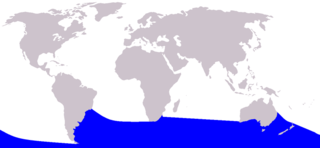
Baird's beaked whale
Order : Cetacea
Suborder : Odontoceti
Family : Ziphiidae
Species : Berardius bairdii
The Baird's beaked whale, giant bottle-nosed whale, north pacific bottlenose whale, northern four-toothed whale is listed as Conservation Dependent (LR/cd), the focus of a continuing taxon-specific or habitat-specific conservation programme targeted towards the taxon in question, the cessation of which would result in the taxon qualifying for one of the threatened categories below within a period of five years, on the IUCN Red List of Threatened Species
Namings for the Baird
A young / baby of a Baird is called a 'calf'. The females are called 'cow' and males 'bull'. A Baird group is called a 'gam, pod or herd'.Some facts about the
Baird's beaked whale
Adult weight : 11380 kg (25036 lbs)
Maximum longevity : 84 years
Female maturity :4383 days
Male maturity : 2922 days
Gestation : 517 days
Litter size : 1
Facts about the Baird's beaked whale
Description & Fascinating FactsBaird's beaked whale, Berardius bairdii, is the largest of all the beaked whales reaching up to 12.
Berardius bairdii is listed in Appendix I&II of CITES.
Baird's beaked whale (Berardius bairdii) is thought to be the largest of all beaked whales, with adults measuring between 11-13 m (35-42 ft) in length and newborns estimated at 4.
The Baird’s beaked whale (Berardius bairdii) is the largest of the beaked whales, reaching nearly 13 metres in length.
The beak, which can be short and ill-defined as in Cuvier's beaked whale (Ziphius cavirostris) or long and cylindrical as in Baird's beaked whale (Berardius bairdii), is equipped with usually 2 but no more than 4 functional teeth, situated toward the front of the lower jaw.
Baird's Beaked Whale is found in the North Pacific Ocean, and spends summer in inshore waters, and winter offshore.
Baird's beaked whale is the largest of all the beaked whales, sometimes reaching a maximum length of 42 feet (12.
The Baird's Beaked whale is slate-grey in colour and may appear darker or brownish at sea. (Full text)
The Baird's Beaked Whale is a [CITIES-listed Endangered Species] (Full text)
Conservation Status: The Baird's Beaked Whale is common in local areas
Description: Baird's Beaked Whale is the largest member of the beaked whales, with a long beak and bulging forehead.
The body of Baird's beaked whale is round and tapering towards the head and tail. (Full text)
Baird's Beaked Whale is found in the North Pacific Ocean, the Sea of Japan and the southern part of the Sea of Okhotsk. (Full text)
Baird's Beaked Whales are easily distinguishable from the Bottlenose Whales as the latter have a smaller and less pronounced beak, and a more prominant dorsal.
Because it tends to avoid ships, sightings of Baird's beaked whales are infrequent.
Baird's Beaked Whales are found annually in Monterey Bay, usually in summer and fall. (Full text)
Baird's Beaked Whales are found only in the North Pacific and are the largest of the Beaked Whales. (Full text)
Baird's Beaked Whales are migratory. (Full text)
Baird's beaked whales are the largest whales in the ziphiid family. (Full text)
More animals beginning with B
